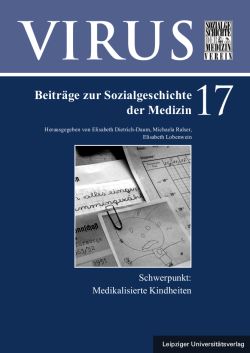
VIRUS Band 17, pp. 029-056, 2020/07/21
Schwerpunkt: Medikalisierte Kindheiten
Die neue Sorge um
das Kind vom ausgehenden 19. bis ins späte 20. Jahrhundert

The system of coercive education, organized by the welfare council of the city government, collaborated closely with psychiatrists, pediatricians and psychologists of University institutes, who developed diagnostic tools, defining the normal and the abnormal, the educable and the non-educable child. From the late 19th century onward, this was framed by the meta-discourse of racial hygiene (Rassenhygiene), by Rudolf Goldscheid’s concept of people economy (Menschenökonomie) and other theories. In contrast, ideas for a psychotherapeutic reeducation by August Aichhorn never rose to paradigmatic hegemony. During the Nazi regime, permanent “selection” and killing of “unworthy” children was organized by the public health and welfare system within the “children’s euthanasia” program. Potential victims were identified andselected by the Children Admittance Center (Kinderübernahmsstelle, KÜSt). Regular torturing children and youth in foster homes continued until the 1980s. After a minor rebellion of a leftist students’ group (“Spartacus”) against violent coercive education, the city authorities instigated internal reforms in 1971. Radical reform commenced in the late 1990s. KÜSt and foster homes were gradually replaced by intervention centers and flatshare communities. The article argues that a clandestine concept, called guilty neglect (schuldhafte Verwahrlosung) by the author, engendered mainly by psychiatrists during the 19th and early 20th century, is one of the main enabling factors for violent and painful treatment of children in foster homes and correction centers. This clandestine concept guided psychiatrists, psychologists, judges, police officers and pedagogues well into the 1980s, and thus contributed to the colonization of the poor and disadvantaged.
Keywords: Vienna Youth Council, 20th century, KÜSt (Kinderübernahmsstelle), Foster Homes, Julius Tandler, August Aichhorn, Erwin Lazar, Hans Asperger, coercive education, epistemic violence, race hygiene, therapeutic pedagogy, social pedagogy